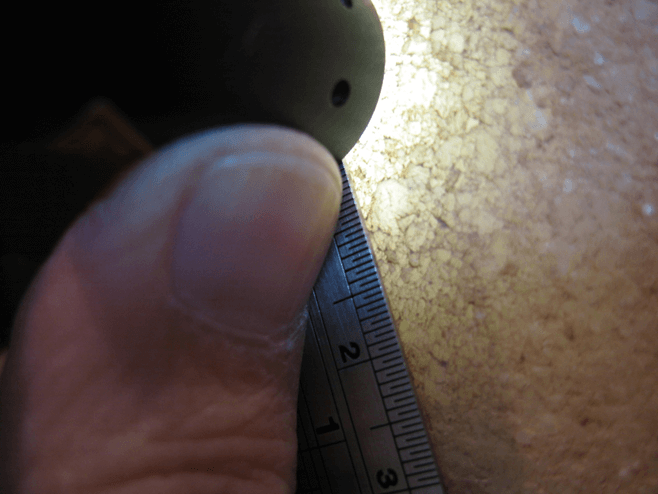Provenance and movement of marble in antiquity
Introduction
The Laboratory of Archaeometry of NCSR Demokritos has a very long experience in the determination of the provenance of marble used in Antiquity and tracing its movement around the Aegean and East Mediterranean from prehistoric to modern times.
Since the late 80’s it is engaged in research involving a series of Ph.D. projects for developing techniques and methodologies as well as extensive databases for discriminating marble from different sources. Such techniques are the Electron Paramagnetic Resonance Spectroscopy, Maximum Grain Size Analysis, Optical Microscopy and stable isotope ratio analysis (IRMS) of carbon and oxygen. In addition, the laboratory has developed a methodology for in-situ optical examination of marble objects with transmitted light and digital microscopes as well as analysis with portable XRF equipment for assessing the marble quality and crystallinity prior to any sampling. The use of all the above techniques has led to the development of a combined powerful methodology for a most precise determination of the origin of marble.
The creation of extensive databases with analysis parameters from ancient quarries is of very high importance for an accurate provenance identification. For this purpose, over the last 40 years, the laboratory has organised continuous expeditions and field work through various projects for searching, recording and sampling ancient quarries all over Greece and in Turkey and has also obtained through collaborations and exchanges marble samples from quarries of several other regions in Mediterranean. This exploration and sampling were not only restricted to ancient quarries with evident traces of marble extraction in Antiquity, but also to marble outcrops which could have been used as sources for carving small marble objects in prehistoric times, such as Cycladic figurines and vessels. This continuous field work has led to the collection of a vast number of samples and the creation of very extensive databases from ancient quarries and marble outcrops.
Several projects have been and are currently carried out involving sculpture and architecture of different periods and places, from excavations and Museum collections in Greece and aboard (see bibliography).
The laboratory has organised in Greece twice the international conference of the Association for the Movement of Marble and Other Stones in Antiquity (ASMOSIA). In 1993 inside NCSR Demokritos and in 2003 in Thasos Island. Dr. Yannis Maniatis is President of ASMOSIA continuously since 2000.
Services and sampling
The Laboratory undertakes the analysis for provenance identification of the marble of any monument on a routine basis with a very high success rate of precise identification.
The sample required is a small chip from a location on the marble object where broken surfaces already exist. This type of sample is undoubtedly much better than a drilled powder, as it can provide important information on the marble grain size and texture. Prior to any sampling it is important if an in-situ examination of the whole object is caried out by members of the laboratory so an overall assessment of the marble features is obtained couples with non-destructive analysis with a portable X-ray fluorescent instrument (pXRF).
The samples are taken by the laboratory personnel.
Contact: Dr. Yannis Maniatis
Some representative bibliography
Maniatis, Y., Mandi, V., and Nikolaou, A., 1988. “Provenance Investigation of Marbles from Delphi with ESR Spectroscopy”. Ιn: Classical Marble: Geochemistry, Technology, Trade, ASMOSIA I, Lucca, Italy, May 9-13, 1988 (eds N. Herz and M. Wealkens), NATO ASI Series, E: Applied Sciences 153, Dordrecht, Boston, 443–452.
Maniatis, Y., Papadopoulos, S., Dotsika, E., Kavoussanaki, D., and Tzavidopoulos, E. 2009. “Provenance Investigation of Neolithic marble vases from Limenaria, Thassos: Imported marble to Thassos?”. In: ASMOSIA VII, Proceedings of the 7th International Conference of the Association for the Study of Marble and Other Stones in Antiquity, ASMOSIA VII, Thassos, Greece, 15-20 September 2003 (ed Y. Maniatis), 439–449, BSH Suppl. 51, Athens.
Maniatis, Y. 2004. “Scientific Techniques and methodologies for the provenance of white marbles”, Proceedings of the International School of Physics “Enrico Fermi”, Course CLIV, in M. Martini, M. Milazzo, and M. Piacentini eds, “Physics Methods in Archaeometry”, IOS press, Amsterdam, 179-202.
Maniatis, Y., Sotirakopoulou, P., Polikreti, K., Dotsika, E., and Tzavidopoulos, I.. 2009. “The “Keros Hoard”: provenance of marbles and their possible sources with a combination of scientific techniques”. Ιn: ASMOSIA VII, Proceedings of the 7th International Conference of the Association for the Study of Marble and Other Stones in Antiquity, ASMOSIA VII, Thassos, Greece, 15-20 September 2003 (ed Y. Maniatis), BSH Suppl. 51, Athens, 413–437.
Maniatis, Y., Tambakopoulos, D., Dotsika, E., and Stefanidou-Tiveriou, T. h., 2010, Marble provenance investigation of Roman sarcophagi from Thessaloniki, Archaeometry, 52(1), 45–58.
Maniatis, Y., Tambakopoulos, D., Dotsika, E., Wescoat, B.D., and Matsas, D., 2012, “Sanctuary of the Great Gods”, an Extended Marble Provenance Study, in ASMOSIA IX, Proceedings of the 9th International Conference on the Study of Marble and Other Stones in Antiquity, ASMOSIA IX, Tarragona, Spain, 8-13 June 2009, Tarragona.
Polikreti, K., and Maniatis, Y., 2002, A New Methodology for the Provenance of Marble Based on EPR Spectroscopy, Archaeometry, 44(1), 1–21.
Gaggadis-Robin, V., Prisset, J.-L., Tambakopoulos, D., Maniatis, Y. 2015, “Provenance investigation of some funeral marble sculptures from ancient Vienna (France)”, In: P. Pensabene and E. Gasparini (eds), Interdisciplinary Studies on Ancient Stone, Proceedings of the Tenth International Conference of ASMOSIA, Rome, 21-26 May 2012, «L’ERMA» di BRETSCHNEIDER, 725-738.
Darblade-Audoin, M.P., Tambakopoulos, D., Maniatis, Y. 2015, “Provenance investigation of a marble sculptures from Lyon Museum, In: P. Pensabene and E. Gasparini (eds), Interdisciplinary Studies on Ancient Stone, Proceedings of the Tenth International Conference of ASMOSIA, Rome, 21-26 May 2012, «L’ERMA» di BRETSCHNEIDER, 503-511.








